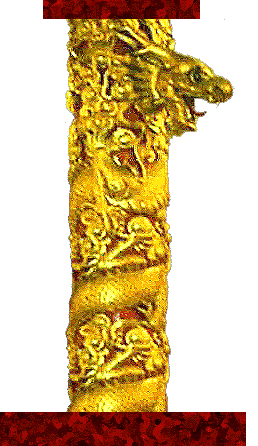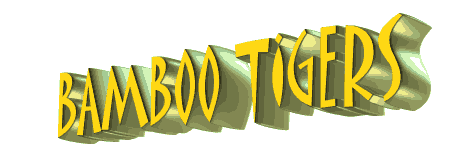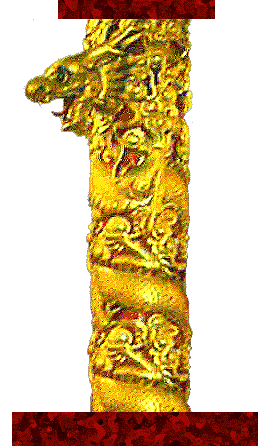| |
In late December, Gan Wah reported that Peter Ng was somewhere in the Bay area. His efforts to locate the fugitive proved futile, but greater minds than his were also at work. The Task Force set up a stake-out, off and on, near the Ng family's home in Oakland. They might as well have kept their nervous eyes trained on a cemetery. Nothing moved except the leaves on the trees.
Then, on December 29th, they found out the family had recently changed addresses to Frisbie Street. It was assumed, naturally, that the telephone number had changed, too, but someone had the presence of mind to check with the telephone company. Same number.
At 8 o'clock on the morning of December 30th, Dick Gamble and Tim Simmons of the Gang Task Force met with Inspector Barry Johnson of the Robbery Detail. The latter, an erstwhile veteran of the won-ton bandits caper, looked like film-star Clint Eastwood "to the life," it was said; thus he had become Barry "Dirty Harry" Johnson. But Dirty Harry wasn't told the full details of the Force's interest in picking up Peter Ng --a typical Clint Eastwood situation: "Put your life on the line, but don't ask what the hell for!"
The investigators of the Golden Dragon couldn't risk telling Dirty Harry or anyone else that the Chinese youth was a suspect in the massacre. Peter Ng was simply wanted for the armed robbery of the Kay Heung Restaurant. It was clear enough that this was a gang case anyway, so the Task Force had not only the right, but also the obligation, to be on hand. Beyond that, "don't ask....!"
The trio from the Hall of Justice responded to the Oakland Police Department's Fugitive Detail to meet Officers Kelsey and Walden. The group of policemen proceeded to a point outside the house on Frisbie Street. They radioed the office in San Francisco of their arrival. From headquarters, Fred Lau, one of the Cantonese-speaking members of the Force, telephoned the Ng residence: "Is Peter home?" Affirmative.
Simmons and Dirty Harry stepped up to the door and rang the bell.
"The Hundred-Year Egg" opened it himself. Humpty Dumpty!
Inside the home, Peter Ng's mother, sister, and younger brother also were present. The older son was placed under arrest. Shortly thereafter, with the unhappy gangster in hand, the policemen returned to San Francisco. He was taken to the Hall of Justice Robbery Detail and asked if he wished to make a statement. He did not.
He was turned over to the Gang Task Force and immediately interrogated by Ron Schneider and Simmons. Eight photographs were shown him, one by one. As each was displayed, he stated, "I don't know him."
"Now we want to ask you some questions about the Golden Dragon murders," Schneider remarked.
A tape recorder was set up, and Simmons read him his rights according to Miranda. "I won't talk to you guys," the boy frowned. "I want a lawyer."
Peter Ng was taken to the Youth Guidance Center, and his case was assigned to Hugh Levine. It was unusual for Levine to handle a juvenile case, but at that point, in the words of Levine, "I had become the Chinatown guy, so it looked O.K."
Levine entertained thoughts of making evidentiary use of the boy's denials because it could be proved that Peter Ng actually did know the people in the mug shots. Those denials, of themselves, showed consciousness of guilt.
But he set this strategy aside in favor of the previously planned entr'acte. He was ready to take a crack at "the Hundred-Year Egg."
Levine prepared by arranging for a lineup (a group including one or more suspects lined up by the police for identification purposes) on January 5, 1978, at the Youth Guidance Center, where Peter Ng was scheduled for a detention hearing in mid-afternoon.
One of the problems with the lineup was the need for stand-ins who were of the same general appearance as the suspect. Asians in that age group and of that height (5-foot-6) were not easy to get in quantity. There were several gang kids in custody at the time, but Hotdog would probably know them, and Levine had hoped to avoid later legal attacks that the lineup was unfairly suggestive because the viewer knew most of the stand-ins; however, he had to take what he could get.
Another problem was in dealing with the Y.G.C. personnel, such as probation counselors, who naturally wanted to know what was going on. All they could be told was that the Force was doing a lineup in the robbery case.
A third problem was the lack of a suitable staging area at the Y.G.C. The choice settled on a classroom featuring flowered black drapes--a terrible background for photographing any subject, and photographs would have to be made for reference purposes. Again, Levine had to take what he could get.
The only props needed were numbered cards for the subjects in the line to hold, and stockings to wear as masks in a second lineup even harder to explain than the first--because no such disguise had been worn in the Kay Heung robbery, but had been in the Golden Dragon. Macho members of the Dragon Force went out to buy several pairs of ladies' hose. Levine suggested that it would not be necessary to look for the most obscuring types of hosiery, such as support hose or very dark ones.
On that Thursday morning, January 5th, Tim Simmons and Mike Mullane of the Force met with Hugh Levine in the D.A.'s office. Together, they proceeded to the Youth Guidance Center on Woodside Avenue off Portola on the middle slopes of Twin Peaks. Before the hearing, they were introduced by Probation Officer Morgan Hom to Peter Ng's defense attorney, Lester Harrison.
Levine then informed Harrison of the lineup that afternoon for the robbery case. Harrison was also told that "a witness in another matter" would view the lineup, as well. He was advised that he had a right to be there, and Levine would put his (Harrison's) responses on record. The defense attorney agreed to the arrangements and stated that he might not be able to be present, but to proceed in his absence.
The law stated that, at a lineup, a defendant represented by counsel had the right to the counsel's presence there, but that a defendant who had not yet been arrested had the right neither to counsel nor to a lawyer's presence in the same circumstance. Peter Ng had been arrested. He had a right to Harrison's presence unless the attorney waived it.
Levine and Simmons moved on then to the detention hearing and made an official record of every statement and every move thus far. Levine added to the record the information that there would be a second lineup for an unrelated case. They could see legal complications down the road if everything were not handled precisely. The goal was too important to risk sacrificing their real case to the legendary technicalities of interpretation and misinterpretation of laws then in effect.
Originally scheduled for 3:30, the lineup finally took place at 3:55. By that time the stand-ins were assembled and had selected the cards which bore numbers by which they would be identified. Peter Ng picked the number "five." Oddly, that had been his number in Simmons' portfolio of photos when Hotdog first identified him on December 12th. Mike Mullane stood inside the room with the boys.
Outside the room, Inspector Johnny Phillips of the Photo Lab prepared to take his shots. Also outside were Hugh Levine and Simmons. Out of sight nearby stood Hotdog Louie in the company of the Task Force's Dick Gamble.
Everything was ready. The delay had arisen from waiting for Harrison to show up. Simmons called his office, but they didn't know where he was. Legal requirements thus satisfied, the identification process began. A large crowd of excited onlookers had formed in the corridor.
The door to the room was covered with paper. A slit about an inch wide and four or five inches long at eye level enabled a witness to see inside without being seen by the stand-ins.
The victim of the armed robbery, Francis Luke, stood at the doorway with the lineup facing front toward him, their numbered cards held waist-high. It took him five seconds to pick out Peter Ng. "Number five," he said quickly. "I'm positive."
While the lineup then broke rank to don stocking masks, Hotdog discreetly lingered out of sight. Simmons went over to him.
"Michael, I want you to honestly say if you can't recognize anyone. If you think you do, I want you to state to what degree. If you honestly recognize anyone, I want you to state if you are positive."
Hotdog nodded his understanding. The lineup had re-formed by then. Hotdog stepped to the door and squinted through the slit. He studied the lineup for 15 seconds.
"Number five."
"Do you want a side view?" Simmons asked.
"O.K."
The lineup was instructed to face left.
Hotdog looked again. "It's number five." Simmons: "Are you positive?" Hotdog: "I'm positive."
Tallyho!
Simmons and Mullane transported Hotdog back to County Jail, where he had been transferred from City Prison after sentencing in the Kit Mun Louie case. It was a matter of one flight up at the Hall of Justice.
Hotdog was asked by Mullane, "Are you positive of your identification?"
Hotdog seemed calm and self-assured. "Yes, I recognize his face, and his body being skinny. I recognized Victor Woo in there, too, but he wasn't the one from (the Golden Dragon)."
Hugh Levine was a very excited man. Positive identification went a long way toward convicting someone. There was the problem of Hotdog's credibility and motive, but, Levine thought, it's a damn good start.
He set about trying the robbery case.
Peter Ng was then represented by a deputy public defender. It lasted a day and far into the night. Both his mother and sister testified, but Levine hung his hopes on Peter testifying himself. His flight after the robbery was to be used in evidence against him. If he testified, Levine could thus pose questions about where he had been since the robbery in May, including the weekend of the Golden Dragon in early September. The defendant might answer: "I wasn't fleeing from the robbery. I was fleeing from something else." Such statements could be used against him in a Golden Dragon trial.
Peter Ng did not testify. That blew Levine's strategy all to hell, but Levine did get him convicted for the robbery case and thus tucked away in the California Youth Authority at Stockton, a city of about 100,000 in the Sacramento Valley.
The Gang Task Force now hoped that a little time behind bars might induce Peter to beg, "Let's make a deal!" Mike Mullane later went to Stockton for an interview with him, but the hard-boiled kid basically told the detective to bugger off.
Levine's next strategem took him to the statements of Golden Dragon witnesses in search of those people most likely able to identify Peter Ng. The word of a gangster like Hotdog was not enough. Levine asked the Force to show pictures of the lineup to the candidates he found. Task Force members took the photos in person up and down the state.
That, temporarily, was the end of that.
True, Peter Ng fit the general description of one of the shooters on the upper level, and he could be proved a Joe Boy, which would supply the motive. But bringing him to trial as a Golden Dragon shooter would have had to be done at the expense of exposing Gan Wah Woo as the informant in the case and, probably, of losing the others involved. The Task Force wanted everyone in one fell swoop. Thus, they chose to sit on this new evidence, and dig for more.
A year after the lineup, Foley happened to be up at the Y.G.C. on another matter and took time to discuss the Golden Dragon case with a Caucasian probation counselor who had been in B-5, the cottage where Peter Ng had stayed while there. When the boy came back from the lineup, he had approached this counselor and asked, "If they put a stocking mask over your face in a lineup, and a black jacket, can you be tried for murder?"
The astute counselor asked him if he were talking about the Golden Dragon. Peter Ng replied, "No." The counselor then suggested he ask the question of a third-year law student who also worked at the Y.G.C. The student could supply an educated answer.
Although the counselor told his family a day or two later that he believed he knew one of the kids involved in the Golden Dragon, he made no effort to communicate his suspicions to the Gang Task Force. He was frightened.
Peter Ng's words to the counselor were more than the kid ever suggested to anyone else about his involvement in the massacre. He hung tough all the way through. Still, the record now included the positive identification of a Golden Dragon shooter, and the shooter was in custody, even if on another charge.
Three days after the lineup at the Y.G.C., an unknown Chinese boy walked into the Kay Heung Restaurant which had been the scene of Peter Ng's armed robbery in May. The kid informed a waiter that he should tell the "boss," Francis Luke, to drop all charges in the case, and the money (about $100) would be returned. He wanted to set up a meeting with Luke. Luke, of course, notified the police, who set up a stake-out at the specified rendezvous, but no one showed up.
Such was the climate of fear and intimidation that hung over the Golden Dragon affair. The wall of silence penetrated both the Asian and the non-Asian communities. But at least, with Peter Ng's identification, the wall showed signs of cracking, if not "the Hundred-Year Egg."
| |
|









